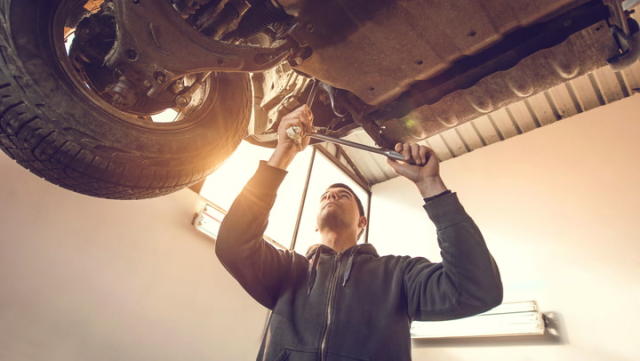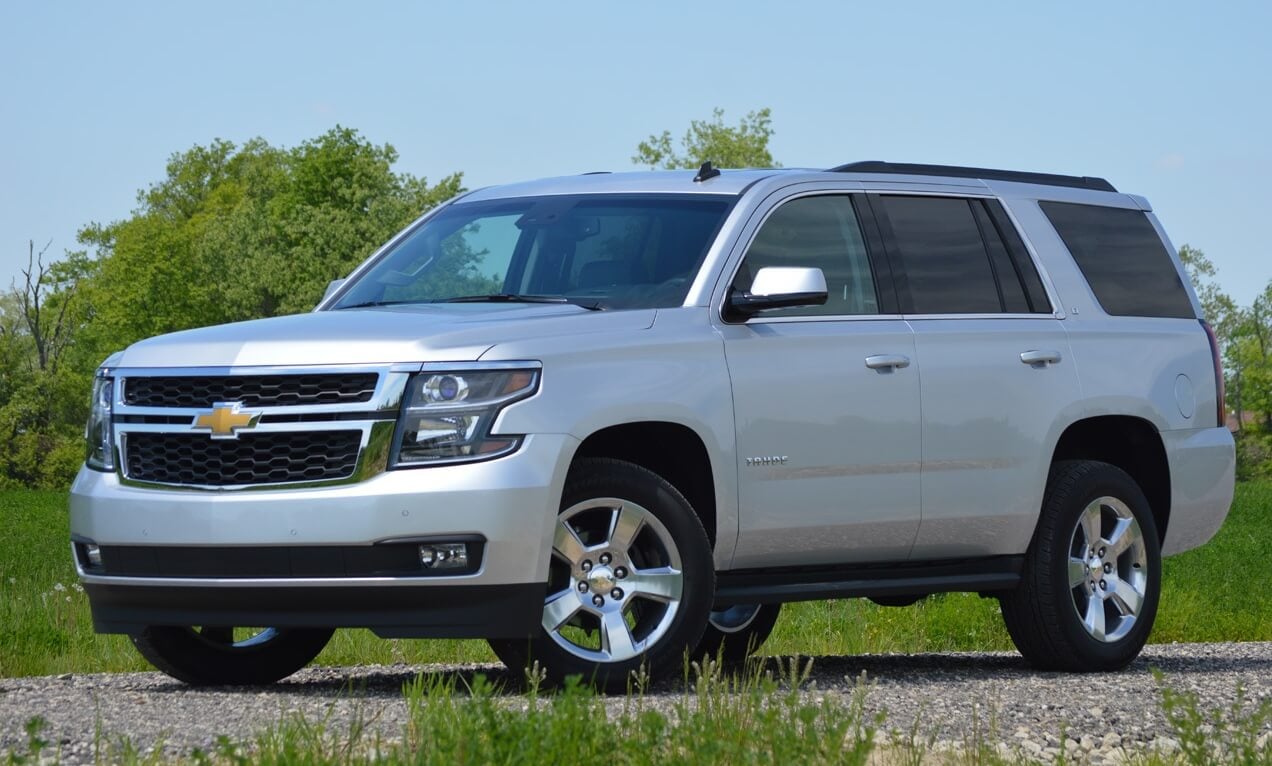MagneRide is one of the most advanced active suspension systems in the auto industry. When performing optimally, they offer top-tier handling and comfort for drivers. However, when they wear out, they can be expensive to fix or replace at the dealership – leaving many owners to wonder, “Can I replace my own MagneRide shocks?”
The answer is yes, you can, in many cases. In the following article, we’ll go over what MagneRide shocks are, when you need to replace them, whether or not you can replace them yourself, and how to do it if you can.
What Are MagneRide Shocks?
MagneRide shocks are a kind of adaptive suspension system that uses magnetorheological fluids – also known as smart fluids – to adjust the suspension resistance. Compared to other types of active suspensions such as air suspensions, they have fewer moving parts and no mechanical valves. This tends to give them superior longevity.
How do MagneRide Shocks Work?
As an active suspension system, MagneRide shocks work by responding to changes in the road and vehicle dynamics. This electronically-controlled process happens almost instantly over several steps:
- Ride height sensors take and report readings. Sensors mounted at each wheel constantly take readings of the frame of the vehicle relative to the road. They send these readings to a suspension computer called an electronic control unit (ECU).
- The ECU analyzes the ride height readings. With the information from the ride height sensors, the ECU – sometimes referred to as a suspension control module – decides what adjustments need to be made at each wheel.
- The ECU sends instructions to the shock absorbers. After determining how much each shock assembly needs to adjust, the ECU sends instructions to each one via an electronic signal.
- The MagneRide shock absorbers adjust resistance. Using information from the ECU, each MagneRide shock increases or decreases resistance as needed. They do so by adjusting the magnetic fields around the smart fluids, which changes the viscosity of the fluids. Shocks that need to provide more resistance make their fluids more viscous, and shocks that need to offer more give make them less viscous.
- The cycle repeats. This cycle continues as long as the vehicle is in motion. Adjustments are made to account for bumps and dips in road surfaces and changes in weight and force distributions caused by the vehicle’s maneuvering.
When Do You Need to Replace MagneRide Shocks?
While MagneRide shocks tend to last longer than air suspensions, they do eventually wear out. At some point in a vehicle’s lifetime, they’ll need to be replaced – usually after hitting the 100,000 mile mark.
However, when you’ll need to replace MagneRide shock absorbers varies greatly depending on how you use your vehicle, where it is located most of the year, and other factors. Repairing and replacing them is very much on an “as-needed” basis, meaning you don’t need to replace them until they’ve started to fail.
Signs of a Failing MagneRide Suspension
That said, once your MagneRide suspension starts to fail, you’ll want to repair or replace it as soon as possible. Driving on a bad suspension – whether it’s active or passive – is uncomfortable, dangerous, and can cause other parts of your vehicle to wear out prematurely.
Your vehicle has a warning light that will illuminate when there are issues with the MagneRide. However, this often doesn’t appear until your MagneRide problems have become relatively severe. Detecting problems early can help save you money and wear and tear on other components.
Here are some early warning signs of a broken MagneRide suspension to look out for:
- Bumpy ride: A working MagneRide suspension provides an impeccably smooth driving experience. If you are feeling lots of feedback from changes in the road surface, your suspension is probably wearing out.
- Leaning or sagging: If your vehicle isn’t sitting evenly and instead, leaning to one side or sagging at the front or rear end, a bad suspension is almost certainly the cause.
- Long stopping: Your suspension does a lot of the work of bringing your vehicle to a stop, absorbing much of the force. If your brakes are in good shape and your car is taking longer to stop than it should, a faulty suspension is likely to blame.
- Heavy turning: MagneRide suspensions actively manage the distribution of force in your vehicle and can reduce the feeling of the weight shifting to one side when cornering. If you notice that feeling while driving, your MagneRide isn’t functioning as it should.
Can You Replace Your Own MagneRide Shocks?
You can replace your own MagneRide shocks as long as you have some experience working on cars, the tools you need, and the parts to complete the job. Your suspension is critical to the safety of your vehicle, so don’t overestimate your abilities. While you don’t need to be a certified mechanic to perform the job, you should understand the basics of working on a vehicle and what a properly-installed suspension looks and feels like at the very least.
How to Replace Your MagneRide Shocks
One of the main advantages of MagneRide shocks over other types of adaptive suspensions is how simple they are in comparison. This makes them much more resilient, but it also makes them far easier to install. Completing the replacement takes just a few hours for most people and only a few steps.
1. Find Quality Replacement MagneRide Components
You’ll first need to get the parts you need to replace your faulty MagneRide components. One option is to go with OEM replacement parts that are exactly the same as your current parts. This guarantees the fit and performance you expect, but OEM MagneRide parts are also very expensive.
Another option is to find aftermarket replacement components. There are several companies that offer high-quality replacement magnetic shocks that meet or exceed the fit and quality of the OEM parts. But you may also come across third-party parts that aren’t up to the job.
There are a few signs of a quality provider to look for when shopping for aftermarket MagneRide replacement parts:
- Make/model/year specific parts: The more specific a vehicle a part is advertised to fit, the more likely it was designed and tested for that exact vehicle. Some low-quality providers repurpose parts that offer a “good enough” fit for vehicles other than the one they were designed for.
- Product warranty: A warranty or guarantee on aftermarket MagneRide parts indicates that a provider is confident that they won’t need to replace them or refund the buyer. In addition to providing a bit of insurance for your purchase, product guarantees are also a sign that replacement components are up to the task.
- Materials listed: It can be hard to tell what materials replacement components are made of from a picture. When a provider lists the materials used to construct the parts in specific it shows that they are not trying to pass off components that look good but are made of cheaper materials.
- Included hardware: Some providers cut costs by not packaging the hardware needed for installation with their parts. This creates a hassle for the person installing them and risks using the wrong hardware for the job. A quality provider will always include everything you need to install your new MagneRide components to ensure an easy and proper installation.
2. Gather the Tools You Need
Due to their simplicity, replacing MagneRide shocks only requires a few basic hand tools (although shop-quality power tools can save you time and wrist strain). In most cases, the tools you need include:
- Tire iron or similar tool: You’ll have to remove the wheels on your vehicle to install your new MagneRide components. To do this, you’ll need to remove the lug nuts.
- Socket wrench set: Most of the work of replacing shock absorbers is in removing and installing the mounting hardware. A good socket set is the best way to do this by hand.
- Work gloves: Since you’ll be working in a tight space, slipping a wrench can cause serious pain. Gloves can help avoid beating up your hands while replacing your MagneRide shocks.
- Light source: Your shocks are located under your vehicle, meaning you’ll need additional light to see what you’re doing. You can use any kind of light sitting on the floor or ground and pointed upward, but a headlamp is ideal for this job.
- Speaker or radio: You can replace your MagneRide shocks in a few hours in most cases. While that’s not a terribly long time, it will go much faster if you can listen to your favorite music or podcasts while you’re doing the work.
It also doesn’t hurt to invite a friend over, even if they’re not mechanically-inclined. An additional person can serve as a safety spotter, an extra set of hands and eyes, and someone to keep you company.
3. Safely Lift Your Vehicle
Removing your old MagneRide components and installing new ones requires you to lift your vehicle enough work underneath it. Lifting your car is the most important safety consideration, so you must ensure that you do it safely and securely.
The jack that came with your car is fine for changing a tire in a pinch, but you’re better off with a stronger one when you need to work underneath it. If you don’t have a hydraulic jack at home, you can buy one for relatively cheap at an auto parts store and find plenty of other uses for it later.
Static or hydraulic ramps are a safe way to lift your vehicle. But if you decide to use them, make sure that your parking brake is engaged before you start working. It’s also a good idea to brace the ramps with something heavy to double down on safety.
4. Follow the Included Instructions
On a general level, replacing your MagneRide shocks is as simple as disconnecting and removing your old parts and then installing and connecting your new ones. However, the exact process is slightly different for each vehicle.
If you purchase your replacement components from a reputable supplier like Strutmasters, they will come with detailed instructions to guide you through the job. In some cases, you may be able to find videos to help. Read through the instructions or watch the video all the way through before starting work. Then, be sure to follow those instructions to the letter, being careful to not skip any steps.
As with all auto repairs, it’s good practice to loosely install all the nuts and bolts on a part before tightening anything completely. This ensures that your MagneRide shocks will be centered in the proper mounting position. Then, you can tighten all mounting hardware at once and inspect the installation as you go.
5. Test Your MagneRide Replacement Shocks
Once you’ve completed the replacement process, you’ll want to test your installation thoroughly before hitting the highway. Before you take your car off of the lift, grab and shake each MagneRide shock assembly to check for excessive play or loose mounts.
After ensuring that the installation is complete, get it back on the ground and turn on the ignition. Make sure that you don’t see a suspension warning light on the dash. Then, slowly drive your car around low-speed neighborhood streets to test that the suspension feels and handles as it’s supposed to. Try to find a speed bump or other road obstacle to test the vehicle’s response.
You’ll also want to test its braking response. If you want to use the most caution, start by braking at a low speed such as 10 miles per hour. Then, test the brakes and gradually higher speeds until you get to at least 40 miles per hour.
If your car passes this initial driving test, it’s most likely safe to take on bigger roads with more traffic. It also means that you not only can replace your MagneRide shocks – you did. The job is complete and you can now enjoy driving around on brand new suspension parts.
Replacing MagneRide Shocks at a Repair Shop
Not everyone will feel comfortable replacing their MagneRide shocks at home. Leaving it to the professionals can give you peace of mind that your suspension was installed correctly.
Having your MagneRide shock absorbers replaced at the dealership with OEM parts can cost a small fortune. But buying aftermarket replacements and taking them to a local mechanic you trust will save you a significant amount of money. The parts are cheaper and since they are designed to be simple enough to install at home, the job is quick and easy for any mechanic – meaning you won’t end up with a massive labor bill.
Make sure that the repair facility you choose works with owner-supplied parts or can order the components you want for you. While some shops insist on using their own parts suppliers, others simply want to make sure you’ve got the right components and will order them themselves to be certain.
MagneRide Shock Replacements From Strutmasters: Quality You Can Trust
With nearly 25 years in the suspension replacement industry, Strutmasters is a name you can trust for MagneRide shock absorber replacements and more. All of the kits and components we carry meet some of the most rigorous quality standards in the country.
You can order your parts directly from our website if you know what you need. If you’d like some help or have questions, call our Suspension Experts at 844-280-0724. Based in our Roxboro, North Carolina headquarters, they can assist you in getting the exact MagneRide components you need and even help you with the installation later on if you get stuck.





